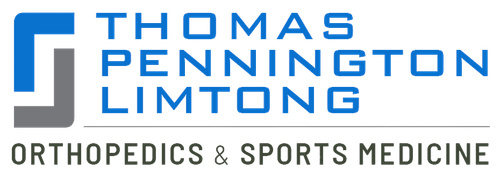 The pectoralis muscle, which is located at the front of the chest, is a large and strong muscle that rotates the arm inward. The muscle’s weak point is the tendon where it is attached to the arm bone. It is the point that is likely to get ruptured during weight training activities, such as a bench press.
The pectoralis muscle, which is located at the front of the chest, is a large and strong muscle that rotates the arm inward. The muscle’s weak point is the tendon where it is attached to the arm bone. It is the point that is likely to get ruptured during weight training activities, such as a bench press.
Cordial, innovative, and board certified orthopedic surgeons at the Thomas & Bigler Knee & Shoulder Institute provide treatments for pec major tendon strain or rupture to patients in Las Vegas, Nevada, and surrounding locations across the landscape.
Symptoms
A pec major tendon sprain is characterized by a sudden and sharp pain at the upper arm’s front part, near the shoulder, where the pec major tendon is attached. The strain is accompanied by a rapid swelling of the upper arm and the front of the shoulder.
An orthopedic surgeon will diagnose the injury by reproducing the pain to confirm the cause. It is done by making the patient pull their arm across the front of the chest or rotate the arm inward against resistance. There is also a noticeable lump or gap in the muscle.
Treatment
An athlete who gets a pec major tendon sprain should follow the principle of R.I.C.E, which is rest, ice, compression, and elevation, for a minimum of two days after the injury. The patient should apply ice for 10 to 15 minutes every hour and decrease the application as the symptoms gradually diminish.
A patient should also consult a sports injury specialist. If the tendon is fully ruptured, then the surgeon will recommend a surgery, followed by a long duration of rest and a subsequent full rehabilitation program. Applying a sports massage to the injured area can also help in healing the injury after the acute stage.
Repairing a Torn Pectoral Tendon
Patients undergoing a surgery to repair the pec tendon tear should how it may be repaired.
Type 1 Tear
It is simple to repair these kinds of tears where the tendon is torn off the bone. It involves an open surgery where an incision is placed into the patient’s axilla.
Surgeons will use a suture anchor device during the open surgery to fit the sutures into the bone, which will then be used to attach the tendon back to the bone. The patient will be in a sling for a relatively longer duration to ensure enough healing before starting on strengthening exercises.
Type 2 Tear
A surgeon will wait until some early repair scar tissue has formed on the pec muscle because this makes a rather difficult repair easier to carry out. Surgeons can sometimes use the cadaver tendon to strengthen or augment the repair.
Type 3 Tear
These tears occur rarely, and mostly within the muscle. They are hard to repair and the surgeon may wait for a couple of weeks so that scar tissue can form and facilitate the repair process.
Terrific, perceptive, and board certified orthopedic surgeons Dr. Steven Thomas and Dr. Gregory Bigler receive patients from Las Vegas, Nevada, and other neighborhoods and cities in this region of the southwest for the treatment of pec major tendon strain or rupture.
If you would like to schedule an appointment or learn more about the Knee and Shoulder Institute procedures & treatments performed by Las Vegas, Nevada board certified surgeons Steven C. Thomas, MD and Gregory T. Bigler, MD. call (702) 933-9393; Physical Therapy (702) 933-9393.
